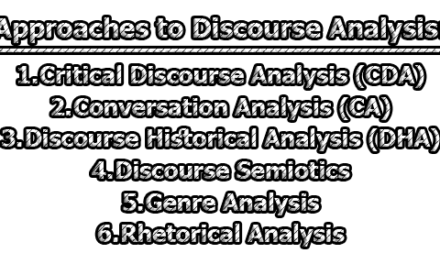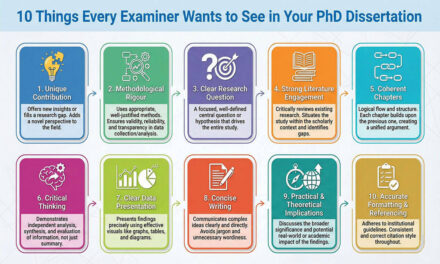Types of Research Sources:
Sources of information are the foundation upon which research and analysis are built. When conducting research, it is important to understand the different types of sources available and their usefulness in various contexts. Primary, secondary, and tertiary sources are the three primary categories of sources that researchers use in their work. Understanding the distinctions between these types of sources is essential for conducting thorough research and producing accurate and reliable findings. In this article, we are going to explore types of research sources.
a. Primary Sources:
Primary sources are the original sources of information that are closest to the event or phenomenon being studied. They are created by individuals who directly experienced or witnessed the event or who conducted original research. Primary sources provide first-hand accounts of events, and they include documents, artifacts, photographs, recordings, and other materials that were created at the time of the event or shortly thereafter. Some examples of primary sources include diaries, letters, newspapers, photographs, government documents, personal accounts, and original research studies.
The use of primary sources in research is essential because they provide a direct connection to the people and events being studied. They offer researchers a unique perspective and an opportunity to examine and interpret the evidence for themselves. Primary sources are particularly valuable for historians, anthropologists, sociologists, and other researchers who are interested in studying past events and social phenomena.
For example, if a historian is researching the causes of the American Civil War, they might use primary sources such as letters from soldiers, diaries kept by civilians, and speeches given by political leaders to understand the perspectives of those who were living during that time. By examining these primary sources, the historian can gain a better understanding of the social, political, and economic factors that led to the outbreak of the war.
Primary sources can also be used in scientific research. For example, if a scientist is conducting a study on the effects of a particular drug, they might use primary sources such as research studies that were conducted on the drug to understand its safety and effectiveness.
Primary sources are essential for understanding history, social phenomena, and scientific research. There are many benefits and drawbacks to using primary sources in research, which are discussed below:
Benefits of Primary Sources:
- Authenticity: Primary sources are original sources of information, created by people who witnessed or experienced the events or phenomena being studied. As such, they provide an authentic and unfiltered view of the past or present.
- The Richness of Detail: Primary sources often contain a wealth of detail about the events or phenomena being studied, including specific dates, names, and locations. This level of detail can provide researchers with a comprehensive understanding of the subject matter.
- Unique Perspective: Primary sources can provide unique perspectives that are not available in secondary or tertiary sources. For example, personal diaries, letters, and photographs can provide insights into the thoughts and feelings of individuals at a particular moment in time.
- Original Context: Primary sources provide information in its original context, allowing researchers to understand the historical or social context in which the events or phenomena occurred.
- Intellectual Challenge: Analyzing primary sources can be intellectually challenging and rewarding, as researchers must interpret and analyze the source material to draw conclusions about the subject matter.
Drawbacks of Primary Sources:
- Limited Perspective: Primary sources provide a narrow view of events or phenomena, as they are created by individuals who may have limited knowledge or understanding of the broader context in which they are operating.
- Bias: Primary sources may be biased, as they are created by individuals with their own beliefs, values, and agendas. This can make it difficult to gain a comprehensive understanding of the subject matter.
- Limited Availability: Primary sources may be difficult to access, particularly if they are located in archives or special collections that are not open to the public. This can make it difficult for researchers to obtain a complete set of primary sources.
- Fragility: Primary sources can be fragile and may deteriorate over time, making them difficult to preserve and study.
- Interpretation: Analyzing primary sources requires interpretation, and different researchers may draw different conclusions from the same source material. This can make it difficult to establish a definitive understanding of the subject matter.
In summary, primary sources have many benefits and drawbacks, and researchers must carefully consider these factors when using primary sources in their work. While primary sources provide an authentic and detailed view of events or phenomena, they may be biased, limited in perspective, difficult to access, fragile, and require interpretation. By weighing the benefits and drawbacks of primary sources, researchers can make informed decisions about how to incorporate primary sources into their research. However, primary sources are the original sources of information that provide first-hand accounts of events and phenomena. They are essential for understanding history, social phenomena, and scientific research.
b. Secondary Sources:
Secondary sources are sources of information that are created by individuals who did not directly experience or witness the event or who did not conduct original research. They are created after the fact and are based on primary sources. Secondary sources include textbooks, encyclopedias, journal articles, and other materials that provide an analysis or interpretation of primary sources.
Secondary sources are useful for researchers because they provide context and analysis of the primary sources. They can help researchers understand the significance of the primary sources and how they relate to the broader context of the topic being studied. Secondary sources are particularly valuable for historians, sociologists, and other researchers who are interested in understanding the historical, social, and cultural context of events and phenomena.
For example, if a historian is studying the American Civil War, they might use secondary sources such as textbooks and journal articles to understand the broader context of the war. These secondary sources might provide information about the political and social factors that led to the war, as well as the broader implications of the conflict for American society.
Secondary sources can also be used in scientific research. For example, if a scientist is conducting a study on the effects of a particular drug, they might use secondary sources such as review articles to understand the existing research on the drug and its potential side effects.
Secondary sources are works that analyze, interpret, or synthesize primary sources. They are produced by scholars or writers who were not directly involved in the events or phenomena being studied. Secondary sources can be beneficial for researchers, but they also have some drawbacks.
Benefits of Secondary Sources:
- Contextualization: Secondary sources provide context and background information that may not be available in primary sources. They can help researchers understand the broader historical, social, or cultural context in which the events or phenomena occurred.
- Multiple Perspectives: Secondary sources can provide multiple perspectives on a topic, as different scholars or writers may interpret primary sources differently. This can help researchers gain a more nuanced understanding of the subject matter.
- Accessibility: Secondary sources are often more readily available than primary sources, as they are typically published and widely distributed. This makes it easier for researchers to access a broad range of sources.
- Synthesis: Secondary sources can synthesize and summarize information from multiple primary sources, making it easier for researchers to gain a comprehensive understanding of the subject matter.
- Interpretation: Secondary sources can provide expert analysis and interpretation of primary sources, helping researchers to understand the meaning and significance of the source material.
Drawbacks of Secondary Sources:
- Interpretation: Secondary sources are interpretations of primary sources, and different scholars or writers may interpret the same material differently. This can make it difficult to establish a definitive understanding of the subject matter.
- Biases: Secondary sources may be influenced by the author’s biases, values, or beliefs, which can affect the interpretation and analysis of the primary sources.
- Inaccuracy: Secondary sources may contain inaccuracies or errors, either due to the author’s mistakes or because of incomplete or incorrect information in the primary sources.
- Lack of Detail: Secondary sources may lack the level of detail found in primary sources, as they are often focused on broader themes or trends rather than specific events or individuals.
- Distance from the Source: Secondary sources are removed from the primary sources, which can make it more difficult for researchers to evaluate the accuracy and validity of the information presented.
In summary, secondary sources can be useful for researchers as they provide context, multiple perspectives, accessibility, synthesis, and interpretation. However, they may also have drawbacks, including interpretation, biases, inaccuracy, lack of detail, and distance from the source. Researchers must carefully evaluate secondary sources and consider their limitations when using them in their work. However, secondary sources are sources of information that are created after the fact and are based on primary sources. They provide context and analysis of primary sources and are useful for understanding historical, social, and cultural phenomena.
c. Tertiary Sources:
Tertiary sources are sources of information that are created by individuals who did not directly experience or witness the event or who did not conduct original research. They are created after the fact and are based on secondary sources. Tertiary sources include reference works such as encyclopedias, dictionaries, handbooks, and textbooks that provide an overview of a particular subject or field.
Tertiary sources are useful for researchers because they provide an overview of a particular subject or field and can help researchers understand the key concepts and terminology related to their research topic. They can also provide a starting point for further research and can help researchers identify primary and secondary sources related to their topic.
For example, if a student is writing a research paper on the history of art, they might use a tertiary source such as an art history textbook to gain an overview of the key movements, artists, and styles of art throughout history. This can help them identify key themes and topics to explore in their research and can guide them towards primary and secondary sources related to their research topic.
Tertiary sources can also be useful for scientists who are conducting research in a new area. For example, if a biologist is studying a new species of plant, they might use a tertiary source such as a field guide to identify and learn about the plant’s characteristics and habitat. This can help them develop a hypothesis and guide their research in the field.
Tertiary sources are reference materials that provide summaries or overviews of information from primary and secondary sources. They are designed to be accessible to a broad audience and are typically produced by experts in a particular field or subject area. Tertiary sources can be beneficial for researchers, but they also have some drawbacks.
Benefits of Tertiary Sources:
- Accessibility: Tertiary sources are usually designed to be accessible and easy to understand, making them useful for people who are new to a subject area or who need a quick overview of a topic.
- Organization: Tertiary sources are often well-organized and structured, making it easy for researchers to locate specific information or topics.
- Synthesis: Tertiary sources can synthesize information from multiple primary and secondary sources, providing a comprehensive overview of a topic.
- Authority: Tertiary sources are typically produced by experts in a field or subject area, providing a high level of authority and credibility.
- Time-Saving: Tertiary sources can be a time-saving option for researchers who need to quickly locate information on a topic, without having to read through large volumes of primary or secondary sources.
Drawbacks of Tertiary Sources:
- Lack of Detail: Tertiary sources may not provide the level of detail found in primary or secondary sources, as they are designed to provide an overview rather than an in-depth analysis.
- Bias: Tertiary sources may be influenced by the author’s biases, values, or beliefs, which can affect the accuracy and reliability of the information presented.
- Inaccuracy: Tertiary sources may contain inaccuracies or errors, either due to the author’s mistakes or because of incomplete or incorrect information in the primary and secondary sources.
- Outdated Information: Tertiary sources may contain outdated or obsolete information, particularly in rapidly changing fields or subject areas.
- Lack of Originality: Tertiary sources are not original works, as they are based on information from primary and secondary sources. This means that they may not offer new or unique perspectives on a topic.
In summary, tertiary sources can be useful for researchers as they provide accessibility, organization, synthesis, authority, and time-saving benefits. However, they may also have drawbacks, including lack of detail, bias, inaccuracy, outdated information, and lack of originality. Researchers must carefully evaluate tertiary sources and consider their limitations when using them in their work. However, tertiary sources are sources of information that provide an overview of a particular subject or field. They can help researchers understand key concepts and terminology related to their research topic and can guide them toward primary and secondary sources related to their topic.
Comparison of Primary, Secondary, and Tertiary Sources:
Primary, secondary, and tertiary sources all serve different purposes in research and analysis. Primary sources are the original sources of information that provide first-hand accounts of events and phenomena. They are essential for understanding history, social phenomena, and scientific research. Secondary sources are sources of information that provide context and analysis of primary sources. They can help researchers understand the significance of the primary sources and how they relate to the broader context of the topic being studied. Tertiary sources are sources of information that provide an overview of a particular subject or field. They can help researchers understand key concepts and terminology related to their research topic and can guide them toward primary and secondary sources related to their topic.
In general, primary sources are considered the most reliable source of information because they provide a direct connection to the people and events being studied. However, primary sources are often limited in their scope and may not provide a comprehensive understanding of the topic being studied. Secondary sources can provide a more comprehensive understanding of the topic by analyzing and synthesizing primary sources. However, they may be biased or limited in their perspective. Tertiary sources can provide a useful starting point for research by providing an overview of the topic, but they should not be relied on exclusively for information.
From the above discussion, we can say that primary, secondary, and tertiary sources are the three primary categories of sources that researchers use in their work. Primary sources provide first-hand accounts of events and phenomena, while secondary sources provide context and analysis of primary sources. Tertiary sources provide an overview of a particular subject or field. Each type of source serves a different purpose in research and analysis, and researchers should use a combination of primary, secondary, and tertiary sources to gain a comprehensive understanding of their research topic.
References:
- Cronenwett, P. H. (2019). Primary, Secondary, and Tertiary Sources. In The SAGE Encyclopedia of Communication Research Methods. SAGE Publications, Inc.
- Stedman, T. L. (2006). Stedman’s medical dictionary. Lippincott Williams & Wilkins.
- Mills, J. E., & Gale, D. D. (2015). Researching primary sources. Routledge.
- Blackwell, A. F., Marriott, K., & Shneiderman, B. (2018). Information visualization: Perception for design. Morgan Kaufmann Publishers.
- Cuddy, L. J., & Duffin, J. (2015). Research data management: Practical strategies for information professionals. Purdue University Press.
- Graham, M., & Mann, L. (2013). Mapping the digital geographies of the Middle East. Environment and Planning D: Society and Space, 31(1), 52-75.
- Jentzsch, A., & Hill, L. L. (2010). The potential of the semantic web for museums. In Museums and the Web 2010 (pp. 1-14).
- O’Brien, J., & Szeman, I. (2014). Popular culture: A user’s guide. Routledge.
- Carlson, K. J. (2018). Avoiding plagiarism, self-plagiarism, and other questionable writing practices: A guide to ethical writing. SAGE Publications, Inc.
- Arntfield, M. (2016). Journalism as instruction: A 21st-century model for journalism education. Journalism & Mass Communication Educator, 71(3), 257-266.
- Ives, S. J., Norton, C., & Wright, D. W. (2015). The ethics of using social media in the selection process. Journal of Business Ethics, 127(1), 79-90.
- O’Connell, C. D., & Jones, S. C. (2011). Publication ethics and the ghost management of the medical publication. Bioethical Inquiry, 8(3), 257-269.
- Harper, R., & Sinanan, J. (2012). The visual imperium of neoliberalism: Technologies of credit and violence in the foreclosure crisis. Journal of Cultural Economy, 5(1), 35-52.
- Bales, K. (2014). Using research in primary care. Elsevier Health Sciences.
- Cooper, D. R., & Schindler, P. S. (2013). Business research methods. McGraw-Hill Education.
- Meijer, R., & Tijdens, K. G. (2014). Online research methods for qualitative and quantitative research. SAGE Publications, Ltd.
- Cronenwett, P. H. (2019). Primary, Secondary, and Tertiary Sources. In The SAGE Encyclopedia of Communication Research Methods. SAGE Publications, Inc.
- Burns, R. B. (2014). Introduction to research methods. Pearson Higher Ed.
- Johnston, R., & Crooks, V. A. (2013). The impact of corporate practices on health: implications for health policy. Journal of Public Health Policy, 34(3), 437-450.
- Beall, J. (2016). Predatory publishers are corrupting open access. Nature, 534(7607), 147.

Library Lecturer at Nurul Amin Degree College










